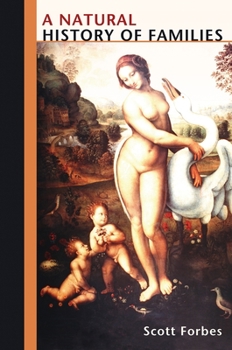A Natural History of Families
Select Format
Select Condition 
Book Overview
Why do baby sharks, hyenas, and pelicans kill their siblings? Why do beetles and mice commit infanticide? Why are twins and birth defects more common in older human mothers? A Natural History of Families concisely examines what behavioral ecologists have discovered about family dynamics and what these insights might tell us about human biology and behavior. Scott Forbes's engaging account describes an uneasy union among family members in which rivalry for resources often has dramatic and even fatal consequences. In nature, parents invest resources and control the allocation of resources among their offspring to perpetuate their genetic lineage. Those families sometimes function as cooperative units, the nepotistic and loving havens we choose to identify with. In the natural world, however, dysfunctional familial behavior is disarmingly commonplace. While explaining why infanticide, fratricide, and other seemingly antisocial behaviors are necessary, Forbes also uncovers several surprising applications to humans. Here the conflict begins in the moments following conception as embryos struggle to wrest control of pregnancy from the mother, and to wring more nourishment from her than she can spare, thus triggering morning sickness, diabetes, and high blood pressure. Mothers, in return, often spontaneously abort embryos with severe genetic defects, allowing for prenatal quality control of offspring. Using a broad sweep of entertaining examples culled from the world of animals and humans, A Natural History of Families is a lively introduction to the behavioral ecology of the family.
Format:Hardcover
Language:English
ISBN:0691094829
ISBN13:9780691094823
Release Date:May 2005
Publisher:Princeton University Press
Length:256 Pages
Weight:1.12 lbs.
Dimensions:9.8" x 1.0" x 6.5"
Customer Reviews
1 rating
A lot of nature and families, but not much history
Published by Thriftbooks.com User , 18 years ago
This book examines the different modes of reproduction and different types of family structures in the natural world, with an emphasis on vertebrates, especially birds and mammals. The goal is to see how different behavioral patterns and reproductive modes found in different species help to further the evolutionary survival of each species. The book examines this topic from multiple standpoints such as genetics, phenotypes, embryology, ecology, statistics, and common sense. The title of the book is a misnomer as there is little history in that the author does not examine extinct species, but only presently occurring species. The author also concentrates on how things exist now, and does not delve deep into how breeding patterns, courtship rituals, family structures and other issues related to sexual reproduction evolved over time. The book repeats many points over and over again, which though tedious, makes the text helpful for the novice reader. This repetition also provides smooth transitions from one chapter to the next. As a book based on science, there is a lot of references to scientific literature, which is good. There are also sufficient diagrams, which is good. The book should have included more examples from non-vertebrates, such as invertebrates, plants, and maybe even fungi, if examples are possible. Overall, an interesting read.






